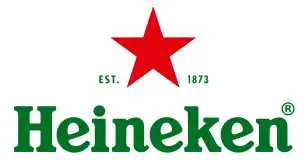
Mobile Robotics Market Size, Trends, Growth, Revenue, Demand, Challenges and Future Outlook
Mobile Robotics Market Growth, Size, Trends Analysis - By Component, By Product, By Application - Regional Outlook, Competitive Strategies and Segment Forecast to 2034
| Published: Jan-2025 | Report ID: AMIN2502 | Pages: 1 - 246 | Formats*: |
| Category : Automotive & Transportation | |||
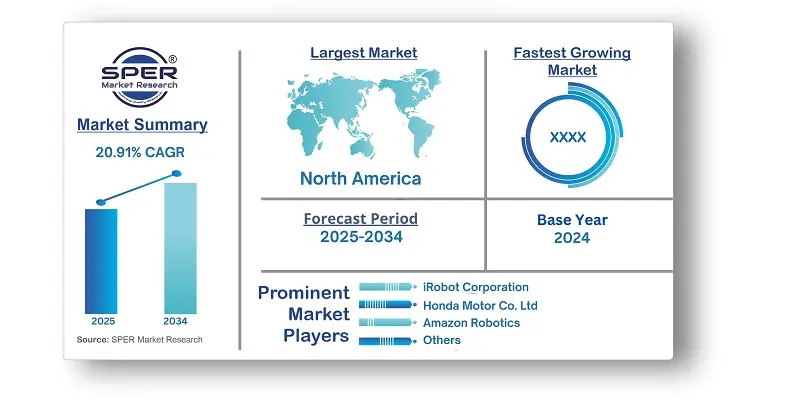
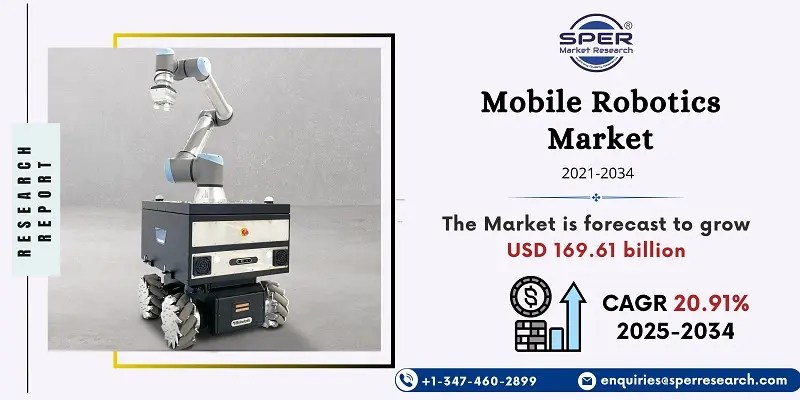
- In October 2024, Amazon opened its most advanced fulfillment center in Shreveport, Louisiana, a significant step forward in the use of robotics and artificial intelligence in logistics. This enormous complex span more than 3 million square feet and enhances productivity by combining modern robotics with human employees. It incorporates the Sequoia inventory system, which can hold over 30 million products while improving storage and picking. ABB revolutionized AMR performance in April 2023 by introducing Visual Simultaneous Localization and Mapping (SLAM) Technology, an AI-enabled navigation system that enables AMRs to make wise choices in complex and changing situations.
- In October 2023, Boston Dynamics launched Stretch, its second commercial product for autonomous warehouse operations. Stretch is a battery-powered mobile robot with advanced sensors and a strong suction gripper, designed to efficiently unload trucks and manage boxes of different shapes and conditions. Its perception system helps it navigate complex environments and adapt to challenges like fallen or opened boxes.
| Report Metric | Details |
| Market size available for years | 2021-2034 |
| Base year considered | 2024 |
| Forecast period | 2025-2034 |
| Segments covered | By Component, By Product, By Application. |
| Regions covered | North America, Latin America, Asia-Pacific, Europe, and Middle East & Africa |
| Companies Covered | SoftBank Robotics Group, UBTECH ROBOTICS CORP LTD, Northrop Grumman Corporation, Kongsberg Maritime, Boston Dynamics, Inc, iRobot Corporation, Honda Motor Co. Ltd, Lockheed Martin Corporation, Amazon Robotics, Kuka AG. |
1.1. Scope of the report1.2. Market segment analysis
2.1. Research data source
2.1.1. Secondary Data2.1.2. Primary Data2.1.3. SPERs internal database
2.1.4. Premium insight from KOLs
2.2. Market size estimation
2.2.1. Top-down and Bottom-up approach
2.3. Data triangulation
4.1. Driver, Restraint, Opportunity and Challenges analysis
4.1.1. Drivers4.1.2. Restraints4.1.3. Opportunities4.1.4. Challenges
5.1. SWOT Analysis
5.1.1. Strengths5.1.2. Weaknesses5.1.3. Opportunities5.1.4. Threats
5.2. PESTEL Analysis
5.2.1. Political Landscape5.2.2. Economic Landscape5.2.3. Social Landscape5.2.4. Technological Landscape5.2.5. Environmental Landscape5.2.6. Legal Landscape
5.3. PORTERs Five Forces
5.3.1. Bargaining power of suppliers5.3.2. Bargaining power of buyers5.3.3. Threat of Substitute5.3.4. Threat of new entrant5.3.5. Competitive rivalry
5.4. Heat Map Analysis
6.1. Global Mobile Robotics Manufacturing Base Distribution, Sales Area, Product Type6.2. Mergers & Acquisitions, Partnerships, Product Launch, and Collaboration in Global Mobile Robotics Market
7.1. Hardware
7.1.1. Sensors7.1.2. Actuators7.1.3. Power Supply7.1.4. Control System7.1.5. Other
7.2. Software7.3. Services
8.1. Unmanned Ground Vehicle8.2. Unmanned Aerial Vehicle8.3. Autonomous Underwater Vehicle
9.1. Agricultural9.2. Cleaning9.3. Educational9.4. Healthcare9.5. Manufacturing9.6. Others
10.1. Global Mobile Robotics Market Size and Market Share
11.1. Asia-Pacific
11.1.1. Australia11.1.2. China11.1.3. India11.1.4. Japan11.1.5. South Korea11.1.6. Rest of Asia-Pacific
11.2. Europe
11.2.1. France11.2.2. Germany11.2.3. Italy11.2.4. Spain11.2.5. United Kingdom11.2.6. Rest of Europe
11.3. Middle East and Africa
11.3.1. Kingdom of Saudi Arabia11.3.2. United Arab Emirates11.3.3. Qatar11.3.4. South Africa11.3.5. Egypt11.3.6. Morocco11.3.7. Nigeria11.3.8. Rest of Middle-East and Africa
11.4. North America
11.4.1. Canada11.4.2. Mexico11.4.3. United States
11.5. Latin America
11.5.1. Argentina11.5.2. Brazil11.5.3. Rest of Latin America
12.1. SoftBank Robotics Group
12.1.1. Company details12.1.2. Financial outlook12.1.3. Product summary12.1.4. Recent developments
12.2. UBTECH ROBOTICS CORP LTD
12.2.1. Company details12.2.2. Financial outlook12.2.3. Product summary12.2.4. Recent developments
12.3. Northrop Grumman Corporation
12.3.1. Company details12.3.2. Financial outlook12.3.3. Product summary12.3.4. Recent developments
12.4. Kongsberg Maritime
12.4.1. Company details12.4.2. Financial outlook12.4.3. Product summary12.4.4. Recent developments
12.5. Boston Dynamics, Inc
12.5.1. Company details12.5.2. Financial outlook12.5.3. Product summary12.5.4. Recent developments
12.6. iRobot Corporation
12.6.1. Company details12.6.2. Financial outlook12.6.3. Product summary12.6.4. Recent developments
12.7. Honda Motor Co. Ltd
12.7.1. Company details12.7.2. Financial outlook12.7.3. Product summary12.7.4. Recent developments
12.8. Lockheed Martin Corporation
12.8.1. Company details12.8.2. Financial outlook12.8.3. Product summary12.8.4. Recent developments
12.9. Amazon Robotics
12.9.1. Company details12.9.2. Financial outlook12.9.3. Product summary12.9.4. Recent developments
12.10. Kuka AG
12.10.1. Company details12.10.2. Financial outlook12.10.3. Product summary12.10.4. Recent developments
12.11. Others
SPER Market Research’s methodology uses great emphasis on primary research to ensure that the market intelligence insights are up to date, reliable and accurate. Primary interviews are done with players involved in each phase of a supply chain to analyze the market forecasting. The secondary research method is used to help you fully understand how the future markets and the spending patterns look likes.
The report is based on in-depth qualitative and quantitative analysis of the Product Market. The quantitative analysis involves the application of various projection and sampling techniques. The qualitative analysis involves primary interviews, surveys, and vendor briefings. The data gathered as a result of these processes are validated through experts opinion. Our research methodology entails an ideal mixture of primary and secondary initiatives.
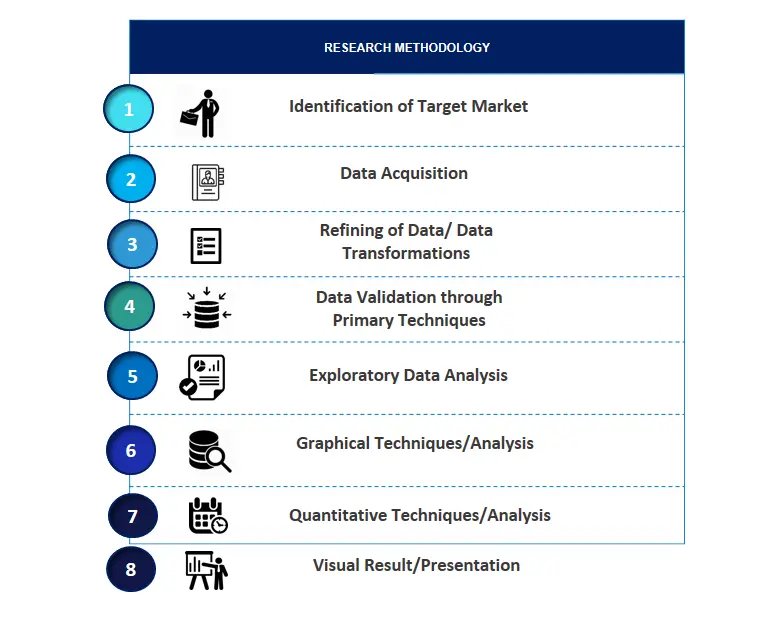
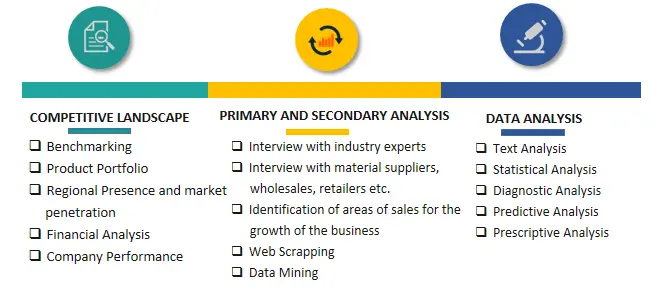

Frequently Asked Questions About This Report
PLACE AN ORDER
Year End Discount
Sample Report
Pre-Purchase Inquiry
NEED CUSTOMIZATION?
Request CustomizationCALL OR EMAIL US
100% Secure Payment






Related Reports
Our Global Clients
Our data-driven insights have influenced the strategy of 200+ reputed companies across the globe.






















